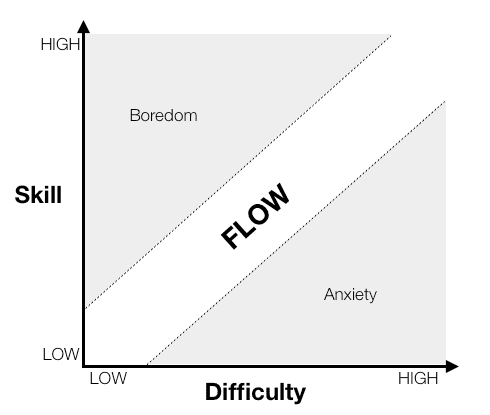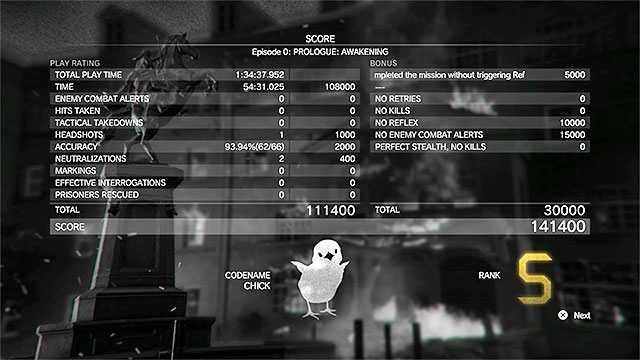[Alex Vu is a game designer, pixel artist and junior developer currently working for Hanoi-based Fine Monkeys studio.]
The problem of difficulty in games has been debated to great depths for a long time. Various alternatives to the traditional approach with different difficulty modes at the beginning of a particular game have been proposed, analyzed and implemented. And yet, as much as they patch up the errors of the traditional approach, within them arise numerous inherent problems and difficulties. As such, I
would like to propose another alternative–not so much a mechanical solution that requires implementation, but rather a different approach to difficulty design.
One thing I’d like to stress is that, this has been applied in various games quite successfully before, and I’ll mention them later on, but not to the extent to which it can deservedly become a central design philosophy, in my opinion. This I presume is due to a lack of a rather clear and deliberate approach to difficulty design.
But first, let me attempt to briefly summarize a few popular criticisms of the traditional difficulty modes approach and its alternative.
Problems with Difficulty Modes
Picture yourself coming into a brand new game, only to be asked to choose a difficulty mode that’s suitable for yourself, and presented with a number of different menu options. And frankly, they don’t do that good of a job at giving you sufficient information to make such an important decision. This is how many games in our history have done difficulty, and it continues to be fairly prevalent among modern games.

Here are its common criticisms:
Asking the player to make such a decision right at the beginning is not exactly a good idea. To select a difficulty mode before the game even starts is to make a major commitment based on very little information available (e.g. a short description). Once the player has selected a difficulty, they are probably going to live with it for the entire playthrough.
Even if the game allows the player to change the difficulty mode later on, it is, in itself, still not a very good idea. For one, explicitly selecting a difficulty mode in a menu-based manner is certainly not an interesting choice that games strive to offer their players. They do not have to weigh anything against anything. They do not have to analyze the risks and rewards coming as a result of each option. And generally speaking, players are not going to be good at weighting short-term convenience against long-term enjoyment. They just do not know the game enough.
Such approach would defeat the entire point of progression through unlocking higher and better tools to enhance and assist with gameplay. It would go against the intended gameplay experience from the game designer. And most importantly, it would make the player feel judged for not choosing a higher difficulty.
There have been several solutions to negate these issues, of which Mark Brown has gone into depths in one of his videos. However, not one of them was able to solve them all and still maintain immersion.
Dynamic Difficulty Adjustment
The idea of Dynamic Difficulty Adjustment (or DDA) hinges on the theory of the player’s Flow State, in which the player is completely immersed, and the game’s difficulty feels just right. Any more difficulty will cause frustration and break immersion. Any less difficulty and the player will quickly find boredom, and you guessed it, lose immersion. Therefore, as designer Andrew Glassner put it in his book Interactive Storytelling, games “should not ask players to select a difficulty level. Games should adapt themselves during gameplay to offer the player a consistent degree of challenge based on his changing abilities at different tasks.” Or in other words, games should be implemented with a performance evaluation system as well as a dynamic difficulty adjustment system in order to adjust itself to accommodate the infinitely different and ever-changing characteristics of players. More on the technical details of DDA can be found in Robin Hunicke’s 2005 paper The Case for Dynamic Difficulty Adjustment in Games.

However, while the Flow State theory admittedly has its merits, the DDA approach doesn’t go without its numerous downsides:
Some players, when they find out about DDA, hate it. Especially when DDA cannot be turned off, the player ends up feeling patronized, and not respected by the game as an adult, capable of taking on challenges and improving him/herself.
Players can, and will, learn to exploit DDA by pretending to be worse at playing than they actually are. And oftentimes, a DDA system will require some sort of break time in order to avoid revealing itself to the player, thus not able to quickly adapt itself to the player’s ostensible skill level.
DDA inhibits the player’s ability to learn and improve. As soon as the player improves, the difficulty ramps up to match their skill level, thus eliminating the possibility of positive results. If the player cannot see some sort of feedback from the game regarding their performance, they cannot know whether any changes in their approach to gameplay were effective.
DDA may create absurdities. One of the popular example of DDA going awry is the rubber-band effect in racing games, where opponents speed up and slow down seemingly for no reason in order to adapt to the player’s performance.
DDA is incompatible with some forms of challenge. If the challenge in question is numerically-based, then DDA can work easily. However, when the challenge is symbolical, with pre-designed elements that are nakedly visible to the player, often having only one or a few intended solutions, then DDA cannot work.
There are many interesting and nuanced approaches to DDA that I won’t mention since that’s beyond the scope of this segment. While I imagine there are going to be a lot of way to make DDA functional and sufficiently inscrutable through clever algorithms and implementation, I am rather discussing the fundamentals.
Organic Difficulty in Games
There seems to be a number of different terms to address this approach, but just for this article I’m going to use the term “Organic Difficulty.” This is something that has been tossed around in the last decade or so.
The basic idea of Organic Difficulty is that the game does not ask the players to select or adjust their preferred difficulty via GUI-based commands, nor does it automatically adapt itself to match with the player’s performance and progress. But rather, the game allows the player to interact with it in certain ways to make it easier, or harder, for themselves. These take the form of tools, approaches, strategies, input sequences or methods, etc. which should often come with some sort of trade-off.
This is something that has been implemented in a number of games including From Software’s Dark Souls, which Extra Credits has dedicated an entire episode to, and which everyone should take a look.

In Metal Gear Solid V, for every mission the player has completed, there’s a score rating system which provides a rough overview of the player’s performance based on a number of factors such as stealth, lethality, accuracy, completion speed, whether the player has completed any mission tasks, and what tools they used. While the player does get minus points for mistakes such as getting detected, raising enemy alert, taking hits, etc. some other factors are not as clear-cut as to how they constitute minus points aside from narrative reasons. The player can always go on a lethal rampage, tossing grenades at everybody in sight, or calling a support helicopter to airstrike the entire enemy base. The player is provided the tools to do exactly all of those, and they’re always just a few buttons away, and the worst they get is a C rank, provided they completed the mission, and a slight dip in their earnings.

Another example of this can be found XCOM: Enemy Within. There's a "cheesy" tactic in the game that can almost ensure victory, which is to have a unit with the Mimetic Skin ability to safely spot the enemies, thus enabling a squadsight-sniper from across the entire map to pick them off one-by-one safely without any real repercussion. This strategy is extremely effective in virtually every mechanical aspect of combat, with the only risk being that the spotter must not be flanked for they would instantly lose invisibility. The actual problem with this strategy is that it’s incredibly boring: your snipers just simply shoot every turn, and you can only take a few shots every turn, not to mention reloading. This strategy is best suited for beginners and people who have made mistakes and want to get out of the downward spiral. While on the other end of the spectrum, there are players who understand how the game and the AI of every alien unit in the game work, so they are more confident about moving up close and personal with enemies with minimal armor. Because for them, it's not about defending against the enemies, but about manipulating, "nudging" the enemies into behaving the way these players want them to (e.g. nobody needs armor when enemies are only going to attack the tank; nobody needs to take good cover when enemies are too scared to move to flank in front of an Opportunist-overwatch unit; etc.)

The above examples seem to imply a few important points regarding difficulty:
Difficulty should not only be designed around the mechanics of a game. It should also take into account the aesthetics or elegance of those very mechanics.
Punishment does not always have to be tangible or significant, as long as it is enough to indicate to players that they are straying off the intended experience. A good analogy would be physical pain. The pain itself is not what’s causing harm to your body. The physical wound is. Pain is merely a bodily signal to let you know that what’s happening right now is pretty bad and you probably shouldn’t let what just happened happen again. But remember, the choice is ultimately yours!
It may not be a good idea to put people on the linear graph of "gaming skill" where some people are simply "softcore, not-so-good at video games" and some other are "hardcore and always challenge-seeking." The idea alone is absurd, because players on such a graph would move up and down constantly, even during a single playthrough. Some people pick things up faster than a game can predict with its tutorials' pacing. Some people due to real life reasons have to abandon the game for some time, and they lose a bit of their touch when they come back to it.
Instead of judging the player’s skill and trying to accommodate every possibility, games should be judging player interactions instead, using a spectrum between Effectiveness and Aesthetics of Play (or what I shall humbly name Ludoaesthetics).



































